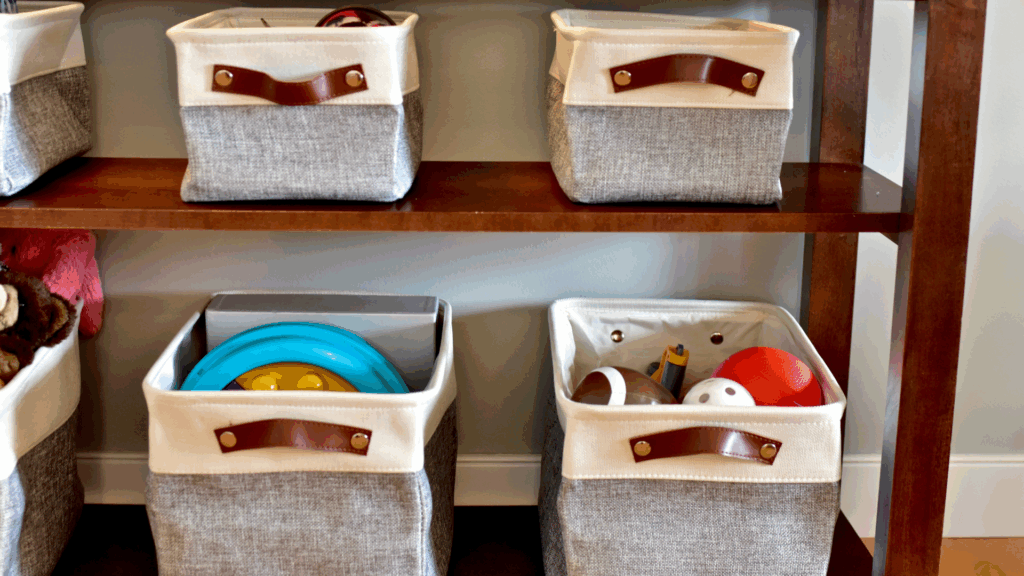Low-Energy Homemaking Hacks for Busy Midlife Women
You know that feeling when it’s 6 PM and you’re already running on empty? You’ve tackled work deadlines, handled family logistics, and maybe squeezed in a quick grocery run. Now you’re staring at dinner prep, a pile of laundry, and a house that somehow exploded while you were out living your life.
Here’s the truth: homemaking doesn’t have to drain what’s left of your energy or your bank account. These low-energy hacks will help you maintain your home efficiently while keeping more money in your pocket and sanity in your day.
The best part? These aren’t perfectionist Pinterest solutions. They’re real-world strategies that work when you’re tired, busy, and just need things to function smoothly.
Kitchen Efficiency That Saves Money
Your kitchen can either be your most significant source of stress or your secret weapon for saving time and money. Let’s make it work for you, rather than against you.
One-Bowl Cooking Methods
Sheet pan meals are your new best friend. Toss chicken thighs, chopped vegetables, and seasonings in one pan. Bake at 425°F for 25-30 minutes while you handle other tasks. One pan means minimal cleanup and maximum flavor.

Slow cooker dump recipes eliminate prep work and reduce your grocery bill. Buy cheaper cuts of meat, add frozen vegetables, broth, and seasonings. Let it cook while you’re at work, and come home to dinner that’s ready.
Your rice cooker isn’t just for rice. Steam vegetables in the basket while cooking grains below. Make oatmeal, quinoa, or even hard-boiled eggs. This single appliance can handle multiple components of your meal simultaneously.
Prep-Ahead Strategies
Sunday protein prep saves both time and money during the week. Cook a whole chicken, ground beef, or a batch of beans. Use these proteins in three different ways throughout the week – tacos on Monday, soup on Wednesday, and salad on Friday.
Freezer smoothie packs eliminate daily decision-making and reduce food waste—pre-portion fruits and vegetables in freezer bags. When you want a smoothie, simply add and blend with your preferred liquid.
Pre-chopped vegetables stay fresh longer when stored properly. Wash, chop, and store in glass containers with paper towels to absorb moisture. You’ll reach for healthy options when they’re convenient, reducing expensive takeout temptations.
Smart Storage Solutions
Store frequently used items at eye level and easy reach. Keep cooking oils, salt, and everyday spices in a lazy Susan near your stove for easy access. This prevents the frustration of digging through cabinets when you’re already tired.
Use clear containers for pantry staples. You’ll see what you have at a glance, preventing duplicate purchases and food waste. Mason jars work perfectly for dry goods and cost less than fancy storage systems.
Laundry Systems That Work
Laundry doesn’t have to consume entire weekends or create endless piles that migrate around your house.
Load Management
Create a family sorting system that works on autopilot. Give each family member a mesh bag for delicates and teach everyone to sort their clothes into designated hampers – darks, lights, and delicates. This eliminates the pre-wash sorting that eats up your time.
Choose wash-and-wear clothing when possible. Fabrics that don’t wrinkle or require special care significantly reduce your workload. Look for cotton blends, jersey knits, and performance fabrics that look good straight from the dryer.
Run loads strategically to save on energy costs. Wash during off-peak hours if your utility company offers time-of-use pricing. Back-to-back loads use the dryer’s residual heat more efficiently.
Folding Shortcuts
Turn Netflix time into productive folding sessions. Keep a basket of clean clothes in your living room and fold while watching your evening show. This makes a mundane task more enjoyable and productive.
Use the basket rotation system for family clothes. Each person gets a clean laundry basket delivered to their room. They’re responsible for putting clothes away and returning the empty basket—no more nagging or multiple trips up and down stairs.
Identify no-fold items in your wardrobe. Underwear, socks, pajamas, and workout clothes can go directly into designated drawer compartments without folding. This cuts your folding time in half.
Cleaning Routines for Real Life
Cleaning doesn’t have to be an all-day event that leaves you exhausted. Smart routines maintain your home with minimal effort.

Daily Maintenance
The 15-minute pickup routine works miracles. Set a timer and conduct a quick walkthrough, returning items to their designated locations. Focus on high-traffic areas, such as the kitchen counter, dining table, and living room. This prevents messes from becoming overwhelming projects.
Keep cleaning supplies in every area where you use them. Bathroom wipes under the sink, glass cleaner in the kitchen, and dusting spray in the living room. When supplies are convenient, you’ll clean up small messes immediately instead of letting them accumulate.
Focus on high-impact quick cleans that make the most significant visual difference. Make the beds, clear the counters, and put the shoes away. These tasks take minutes but make your home look significantly tidier.
Weekly Deep-Clean Strategy
Use a room rotation system instead of trying to clean everything in one day. Monday is for bathrooms, Tuesday is for the kitchen deep clean, and Wednesday is for living areas. This spreads the work across the week and prevents weekend cleaning marathons.
Involve family members in age-appropriate tasks. Kids can dust baseboards, sort recycling, or organize their own spaces. Even small contributions add up and teach valuable life skills.
Achieve professional-quality results on a budget using simple ingredients—baking soda and vinegar handle most cleaning challenges. Dawn dish soap removes grease stains from fabric. These basic supplies cost less than specialized cleaners and work just as well.
Make your weekly cleaning more efficient by working top to bottom. Dust ceiling fans and light fixtures first, then work down to surfaces and floors. This prevents the need for re-cleaning areas when dust settles.
Prevention Over Perfection
Place doormats inside and outside every entrance to reduce tracked-in dirt. This simple step significantly reduces your floor cleaning time and protects your flooring investment.
Use coasters, placemats, and table runners to protect surfaces. These barriers prevent damage and reduce the need for deep cleaning. They’re much easier to wash or replace than refinishing furniture.
Home Organization Without Overwhelm
Organizational systems only work if they’re simple enough to maintain when you’re tired and stressed.
Container Solutions
Dollar store containers work just as well as expensive organizers for most needs. Use clear plastic bins for seasonal items, drawer organizers for office supplies, and small containers for bathroom essentials. Label everything clearly so family members can maintain the system.

Repurpose household items creatively. Empty yogurt containers organize small items in drawers. Shoe boxes with dividers sort craft supplies or office materials. Mason jars hold everything from cotton balls to paper clips.
Create label systems that actually work. Use a label maker or write clearly with a permanent marker. Include pictures for young children or family members who may struggle with reading. Good labeling ensures items return to their proper homes.
Traffic Flow Optimization
Place daily essentials where you naturally reach for them. Keys and sunglasses near the door, phone chargers by your bedside, coffee supplies near the coffee maker. Working with your natural habits instead of against them reduces mental fatigue.
Create drop zones that actually function. A basket by the door catches items that need to go upstairs. A tray on your dresser holds jewelry and pocket contents. These designated spots prevent clutter from spreading throughout your home.
Reduce decision fatigue by creating obvious homes for everything. Mail goes in one specific basket, shoes in a designated area, and charging cables in a designated drawer. When everything has a clear place, putting things away becomes automatic.
Store items based on frequency of use. Daily items get prime real estate at eye level and easy reach. Seasonal or rarely used items can be stored in high or less convenient locations.
Final Thoughts on Low Energy Hacks
The key to success with these homemaking hacks is to start small and build habits gradually. Pick one area that causes you the most stress and implement just one or two changes.
Remember that these systems save money in multiple ways. You’ll waste less food, avoid duplicate purchases, prevent damage to your belongings, and reduce the temptation to pay for convenience services when you’re overwhelmed.
Your energy is precious, and your time is valuable. These strategies help you maintain a comfortable, functional home without sacrificing your well-being or financial goals. Perfect isn’t the goal – functional and sustainable are.
Small changes compound over time. The 15 minutes you save on laundry this week adds up to hours saved over the year. The grocery money you save through better meal planning helps build your emergency fund. The energy you conserve on cleaning can be spent on activities that truly matter to you.
Which of these low-energy homemaking hacks will you try first? Share your favorite time-saving tip in the comments below—I’d love to hear what works best for you at home!

